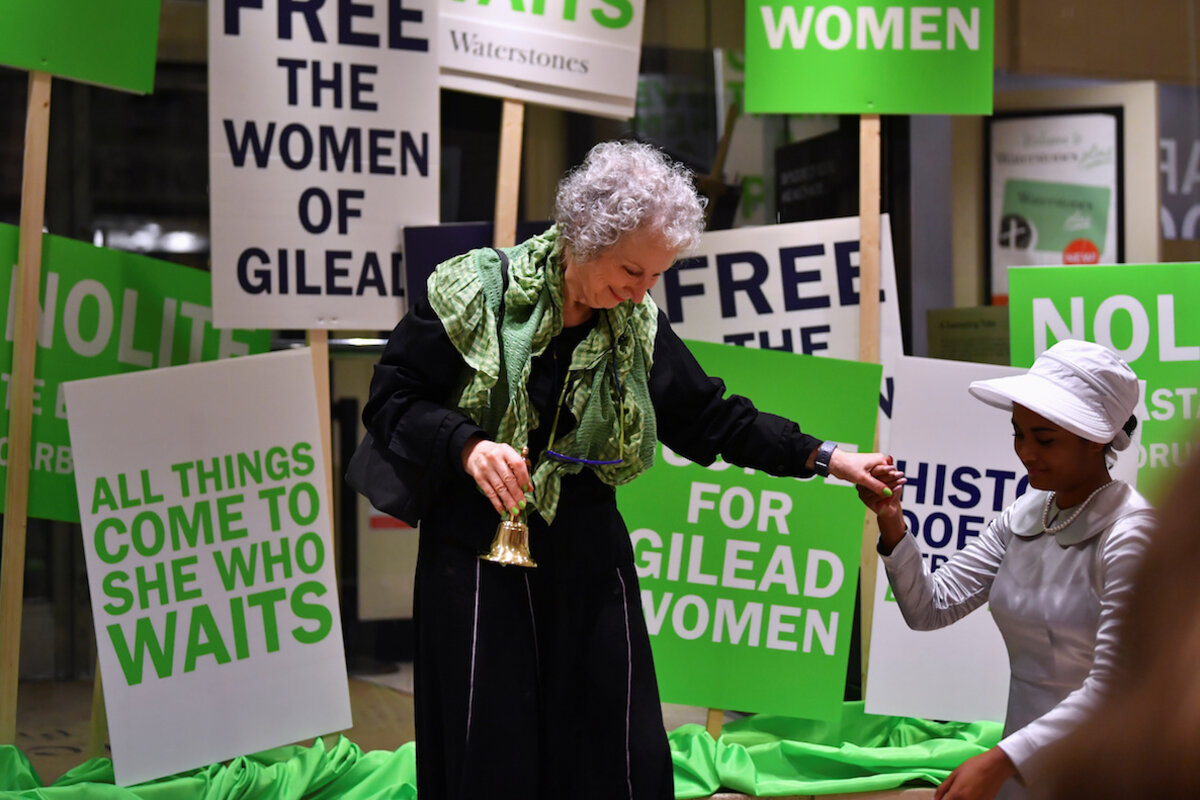‘The Testaments’ bears witness to oppression
Loading...
Few new releases have met with such anticipation as “The Testaments,” Margaret Atwood’s sequel to her 1985 blockbuster “The Handmaid’s Tale,” which picks up the story 15 years after the conclusion of the first book.
One needn’t have read “The Handmaid’s Tale” to get lost in the sequel. The imagery and characters of the fictional Gilead have become part of our contemporary lexicon. The book spawned a successful television series, where Atwood serves as a consulting producer. People recognize the handmaids’ red capes and white bonnets, which have been adopted by protesters at political demonstrations.
During interviews, Atwood has said that she wrote the second book in part to answer many of the questions that fans had posed about the first. She has also said that she was compelled to write it because she was inspired “by the world we’ve been living in.”
Why We Wrote This
Where “The Handmaid’s Tale” explored the rivalries among the oppressed women, the sequel examines the effect of internalizing the priorities of the oppressors.
Released in 1985, “The Handmaid’s Tale” was described as “a dystopian fantasy,” something that could never happen. Few would have imagined that the fantasy could emerge as reality – the challenges to women’s rights, the disregard for democratic institutions, the weaponization of religion in the name of political ambition. If the first book was so prescient, dare we ask what is in the second?
A quick recap: Gilead is a theocracy that emerged after the collapse of the democratic government formerly known as America. Men rule. Women are to be silent. To maintain this structure, women are relegated to limited roles such as Commanders’ Wives; Marthas, who tend to the children and households; Aunts, women who run things in “the women’s sphere”; and Handmaids, who are essential because of their capacity to reproduce. The challenge facing the country is a precipitous drop in fertility, a consequence of the environmental pollution.
In “The Testaments,” Atwood builds on the testimonies of three women: Aunt Lydia, a prominent figure in the earlier book, as well as two teenagers, Agnes and Daisy.
Agnes lives in Gilead. She navigates the confines of her daily life with no awareness of what the world was like before the regime. Daisy lives in Canada with people she assumes are her parents, though things don’t add up. The girls share a youthful idealism. This hopefulness borne of innocence gives them power for the battles to come.
Not so innocent is Aunt Lydia. In “The Testaments,” Atwood provides the detail that she only suggested before, unwrapping the sordid story of the rounding up of the educated women and the regime’s systematic breaking of their will.
The surviving Aunts become collaborators with the regime, wielding their power with a cold inhumanity, and none more so than Aunt Lydia. As the story unfolds, she explores her complicity. “How could I have behaved so badly, so cruelly?” she asks.
Simply, the regime had given her a choice and Aunt Lydia chose not to be a victim. Where “The Handmaid’s Tale” explored the rivalries that grew among the oppressed women, the sequel examines the effect of internalizing the priorities of the oppressors.
Atwood, a masterly storyteller, spins a chilling tale. She has said that she decided not to include anything that had not already occurred in history. The theocracy that is Gilead? She based it on the Puritans. The control of information? She based that on 20th-century Berlin.
For those who look upon “The Testaments” as something that could never happen, Atwood responds that it already has, and asks whether we are sliding back to that place. She considers the book a wake-up call. As readers confront the horrors of Gilead, many of them will unquestionably see parallels to our contemporary society.









